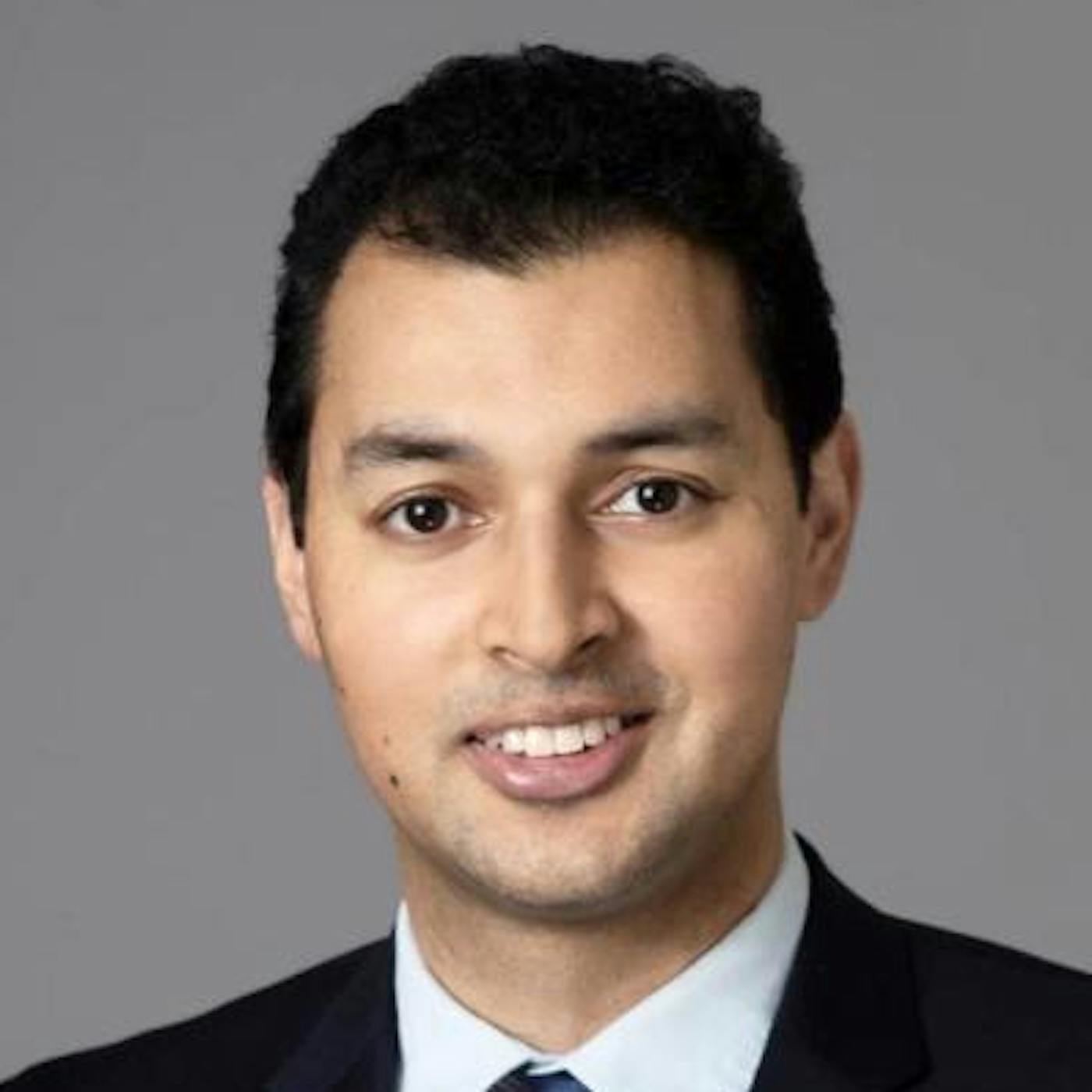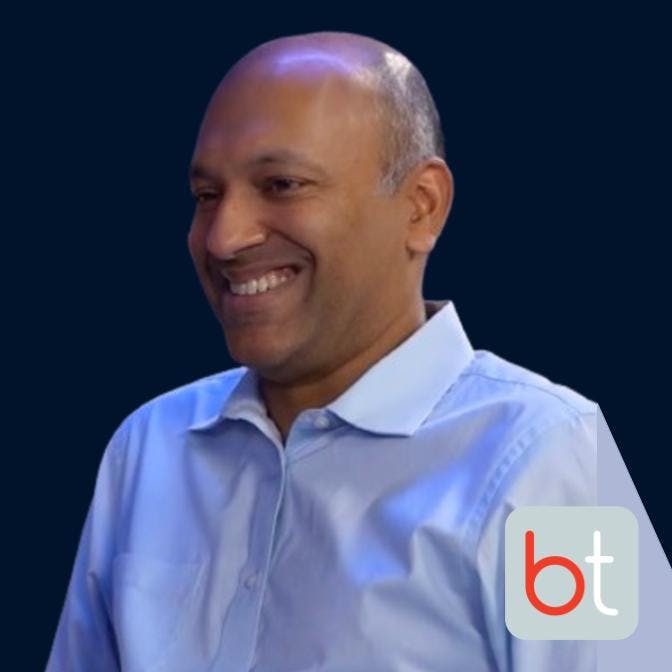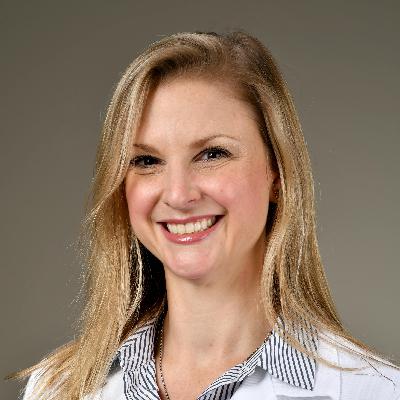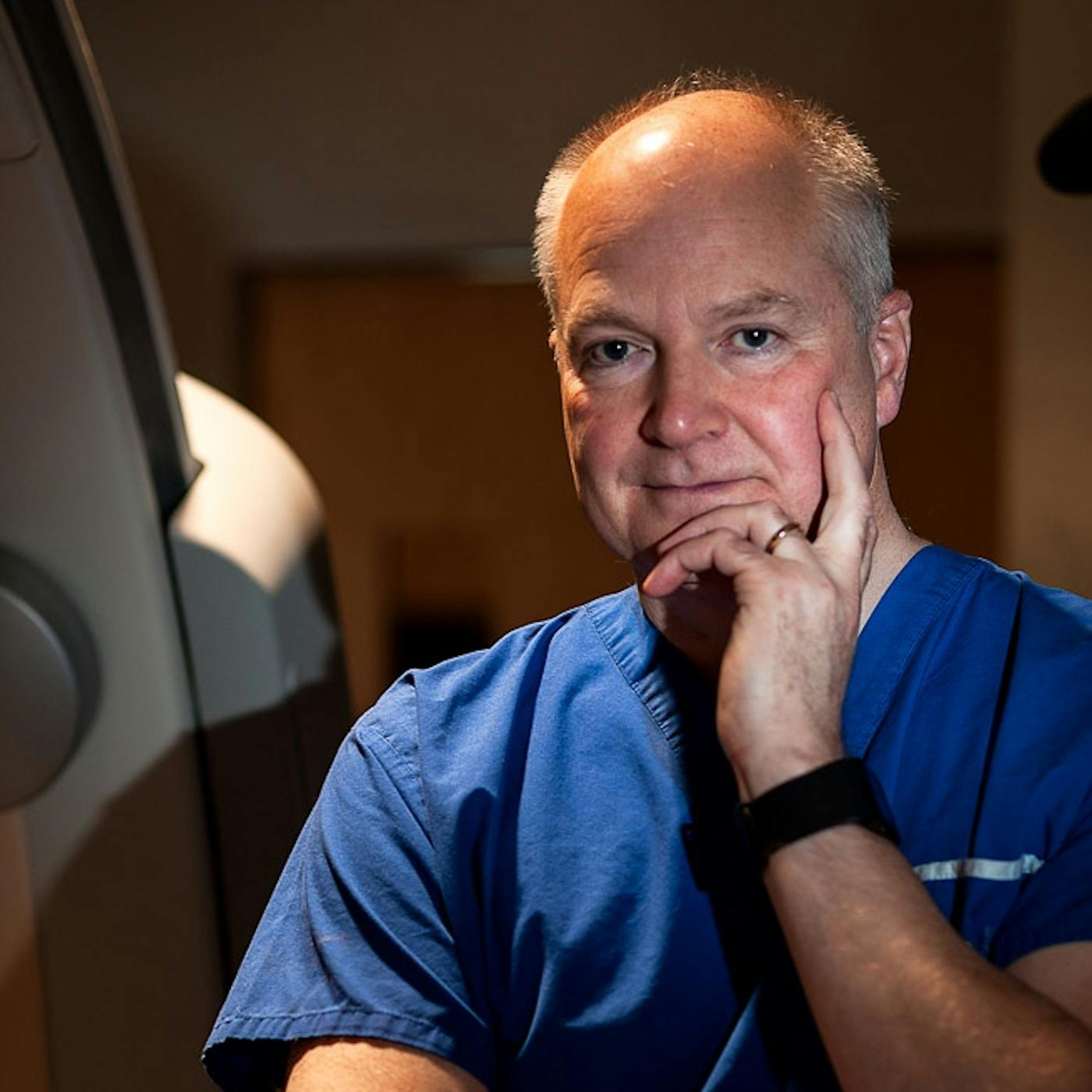Discover BackTable MSK
BackTable MSK

109 Episodes
Reverse
“We learn traditionally that bone metastasis is terminal.” 一 Or is it? In this episode of the BackTable MSK podcast, host Dr. Jacob Fleming welcomes Dr. Francis Lee, a leading figure in orthopedic oncology, to discuss advancements in treating skeletal metastasis. Dr. Lee, the Wayne O. Southwick Professor from Yale and President-elect of the Musculoskeletal Tumor Society, shares his innovative AORIF (Ablation, Osteoplasty, Reinforcement and Internal Fixation) technique, which emphasizes collaboration between orthopedic oncologists and interventional radiologists.
---
This podcast is supported by an educational grant from Medtronic.
---
SYNPOSIS
The conversation covers the complexities of bone metastasis, the biomechanics of skeletal ablation, and the importance of understanding bone-cancer interactions. Dr. Lee also shares insights from his translational research on cancer and bone dynamics, and emphasizes the need for continued interdisciplinary collaboration to drive forward minimally invasive treatments.
---
TIMESTAMPS
00:00 - Introduction 01:39 - Crash Course: Orthopedic Oncology 10113:24 - The Important Role of Biomechanics20:10 - Dr Lee’s Training and Interdisciplinary Collaboration28:13 - Intraoperative Imaging and Techniques in AORIF40:15 - Cannulated Screws for Access and Fixation 42:24 - Case Study: Sacral Insufficiency Fracture and Cement Injection44:17 - Understanding Cement Properties and Application46:45 - Case Study Series: Approach to Reconstruction57:58 - Decision Making in Complex Procedures01:08:40 - The Power of Bone Regeneration01:12:31 - Final Thoughts
---
RESOURCES
Dr. Francis Lee, MD, PhD, FAAOS, MBAhttps://medicine.yale.edu/profile/francis-lee/
Minimally Invasive Image-Guided Ablation, Osteoplasty, Reinforcement, and Internal Fixation (AORIF) for Osteolytic Lesions in the Pelvis and Periarticular Regions of Weight-Bearing Boneshttps://pubmed.ncbi.nlm.nih.gov/32139256/
Living in the best of both worlds: balancing pain management and quality of life. In this BackTable MSK Brief, Dr. Mark Amsbaugh and Dr. Ran Lador discuss multidisciplinary approaches to treating spinal tumors with a particular focus on pain management. They explore the complexities of defining and treating pain related to spinal tumors, differentiating between mechanical instability, tumor burden, and neuropathic pain.
The conversation delves into the roles of various treatments including opioids, radiation, nerve blocks, cryoablation, and surgical interventions. They highlight the evolving landscape of spine oncology, emphasizing the need for holistic approaches and the promising future of integrating advanced technologies for better patient outcomes.
Episode Outline
00:00 - Introduction
00:53 - Approach to Pain Management in Spine Oncology
02:54 - Multimodal Analgesia
04:25 - What is a Safe Radiation Dose that Spares Spinal Nerves?
07:59 - The Balance Between Quality of Life and Pain Management
09:58 - Final Remarks
Resources
Dr. Mark Amsbaugh, MD
https://med.uth.edu/neurosciences/dr-mark-j-amsbaugh-md/
Dr. Ran Lador, MD
https://med.uth.edu/ortho/2022/11/02/ran-lador-md/
Dr. Alexa Levey, MD
https://medicine.yale.edu/profile/alexa-levey/
As our understanding of pain physiology evolves, neuromodulation continues to offer new treatment possibilities in MSK pain management. In this episode of the BackTable MSK, host Jacob Fleming discusses the evolving world of neuromodulation with Dr. Timothy Deer, a leading expert in the field. Dr. Deer shares insights from his extensive career and his innovative contributions in neuromodulation.---This podcast is supported by:Medtronic Osteocoolhttps://www.medtronic.com/en-us/healthcare-professionals/products/surgical-energy/ablation/radiofrequency-ablation/systems/osteocool-2-0-bone-tumor-ablation-system.html---SYNPOSISThe conversation covers the development of spinal cord and dorsal root ganglion (DRG) stimulation, the significance of patient selection and challenges facing neuromodulation therapies, and exciting developments in the field, including AI. Dr. Deer and Dr. Fleming also discuss the importance of advanced training and the pioneering work by the American Society of Pain and Neuroscience (ASPN) to improve procedural education through its innovative MIS Certification Program.---TIMESTAMPS00:00 - Introduction02:52 - What is Neuromodulation?06:03 - Evolution of Neuromodulation08:49 - Use of Closed Loop and AI 13:58 - DRG Stimulation Explained19:58 - Progression of Peripheral Nerve Stimulation26:26 - Handheld Navigation and Reducing Radiation Exposure 30:18 - The Umbrella of Specialties within ASPN35:15 - Obtaining MIS Certification and Fellowship Program Outlook44:07 - Future Directions of Neuromodulation48:09 - Concluding Thoughts---RESOURCESDr. Timothy Deer, MDhttps://centerforpainrelief.com/doctor-timothy-deer/ American Society of Pain and Neuroscience (ASPN)https://aspnpain.com/
“There is always constant review and constant learning”. In this BackTable MSK Brief, Dr. Mark Amsbaugh and Dr. Ran Lador discuss comprehensive treatment strategies for spinal tumors, highlighting the critical interplay between surgical and radiation oncology.
The doctors explain the complex planning required based on tumor characteristics, including surgical options like en bloc resection and minimally invasive techniques, as well as the advancements in radiation therapy. The conversation emphasizes the importance of collaboration across disciplines to optimize patient outcomes, improve quality of life, and adapt to new medical advancements.
Episode Outline
00:00 - Introduction
00:21 - Collaboration Between Surgeons and Interventionalists
05:42 - Intertwined Approach of Radiation and Surgical Treatment
07:37 - Advancements in Radiation Techniques
14:15 - Advancements in Surgical Approach
16:20 - Final Thoughts
Resources
Dr. Mark Amsbaugh, MD
https://med.uth.edu/neurosciences/dr-mark-j-amsbaugh-md/
Dr. Ran Lador, MD
https://med.uth.edu/ortho/2022/11/02/ran-lador-md/
Dr. Alexa Levey, MD
https://medicine.yale.edu/profile/alexa-levey/
Check your ego at the door! In this BackTable MSK Brief, Dr. Mark Amsbaugh and Dr. Ran Lador share their multidisciplinary approach to the treatment of spinal tumors at the University of Texas and Memorial Hermann in Houston.
They highlight the distinctive aspects of their practice, including their extensive collaboration and support system for patients, the intricate process of managing spinal tumors, and the unique challenges and solutions they encounter. The doctors emphasize the importance of teamwork, minimally invasive techniques, and comprehensive patient-centered care to improve treatment outcomes for patients with spinal tumors.
Episode Outline
00:00 - Introduction
03:18 - Addressing Potential Barriers in Receiving Spinal Tumor Treatment
04:32 - The Multidisciplinary Approach in Action
07:46 - Minimally Invasive Techniques and Their Impact
09:49 - Navigating Patient Care and Referrals
14:29 - Final Thoughts
Resources
Dr. Mark Amsbaugh, MD
https://med.uth.edu/neurosciences/dr-mark-j-amsbaugh-md/
Dr. Ran Lador, MD
https://med.uth.edu/ortho/2022/11/02/ran-lador-md/
Dr. Alexa Levey, MD
https://medicine.yale.edu/profile/alexa-levey/
Are you considering expanding your IR practice into pain management services? Get the download from someone who’s done it already. In this episode of BackTable MSK, Dr. Sean Maratto from Philadelphia's Jefferson Health Network is joined by guest Dr. Junjian Huang from Emory University School of Medicine to discuss the intricacies of building a pain management practice within the interventional radiology space. ---This podcast is supported by an educational grant from Medtronic.---SYNPOSISDr. Huang shares his career journey, highlighting his shift towards pain palliation. The conversation covers a range of topics including procedural insights, patient management strategies, navigating institutional politics, and future trends in orthopedic IR. Dr. Huang emphasizes the importance of balancing patient care with building robust referral networks, and shares valuable advice for budding interventional radiologists.---TIMESTAMPS00:00 - Introduction02:20 - What’s Your Why? Why Pain Intervention? 12:52 - Building a Complex Pain Management Practice24:47 - Marketing a Service Line30:57 - Patient Impact from Pain Management Services39:53 - Recommendations and Indications for Cryoneurolysis and BVNA 45:36 - Post-Procedure Follow-up and Psychosomatic Pain Guidance52:35 - Insight to the Future of Interventional Pain and Final Thoughts---RESOURCESDr. Junjian Huang, MDhttps://med.emory.edu/directory/profile/?u=JHUAN22 Dr. Sean Maratto, MDhttps://www.jeffersonhealth.org/find-a-doctor/m/maratto-sean-a
To ablate or not to ablate? That is the question. Learn how to tackle complex and unique cases of kyphoplasty and spinal ablation in part two of our discussion with Dr. Asad Baig and host Dr. Michael Barrazza.---This podcast is supported by an educational grant from Medtronic.---SYNPOSISThis episode looks at the ins and outs of real-world kyphoplasty and spinal ablation cases, including detailed patient histories, diagnostic techniques like the Oswestry Disability Index and Roland-Morris Disability Questionnaire, and the challenges of treating patients with extensive spinal hardware, osteoporosis, and other complicating factors.---TIMESTAMPS00:00 - Introduction01:38 - Hx of Osteoporosis and Previous Kyphoplasty04:06 - Challenges in Identifying Fractures05:29 - Tool Selection and Technique10:35 - Post-Kyphoplasty Follow-Up and Patient Outcomes13:29 - Importance of Timely Treatment18:13 - Weight Loss and Cancer Concerns28:26 - Final Thoughts and Takeaway---RESOURCESDr. Asad Baig, MDhttps://doctors.columbia.edu/us/ny/new-york/asad-baig-md-51-west-51st-street OsteoCool RF Ablation System by Medtronichttps://www.medtronic.com/en-us/healthcare-professionals/products/surgical-energy/ablation/radiofrequency-ablation/systems/osteocool-radiofrequency-ablation-system.html
From patient selection to procedure technique–learn the key insights that shape a successful kyphoplasty and spine ablation practice. In this episode of the BackTable MSK Podcast, host Dr. Michael Barraza welcomes back Dr. Asad Baig, an Interventional Radiologist and director of the Interventional Spine Center at Columbia University. They discuss the latest developments at Columbia, focusing on exciting expansions in the interventional radiology and spine realms. The primary focus of their conversation is on advanced techniques in spine ablation and kyphoplasty, and the ideal patient profile for these treatments.---This podcast is supported by:Medtronic OsteoCoolhttps://www.medtronic.com/en-us/healthcare-professionals/products/surgical-energy/ablation/radiofrequency-ablation/systems/osteocool-2-0-bone-tumor-ablation-system.html---SYNPOSISDr. Baig begins the episode by explaining the importance of collaborating with radiation oncologists and spine surgeons to optimize patient outcomes and emphasizes considerations, such as bone quality, prior to a spinal ablation. The episode also features Dr. Baig’s approach to treating sclerotic versus lytic lesions with his insights on navigating complex cases involving post-radiation fractures and internal fixation complications. This first episode of a two-part series emphasizes a multi-disciplinary approach and the need for precise imaging and patient communication when treating patients with spinal ablation.---TIMESTAMPS00:00 - Introduction 01:31 - Evaluating Patients Prior to Spine Ablation 09:02 - Who is the Ideal Candidate for Ablation Kyphoplasty?14:24 - Approaching Lesions Within the Vertebral Body21:26 - When is it Appropriate to Use Balloons After an OsteoCool Ablation?27:58 - Approach to Patients with Significant Vertebral Height Loss35:33 - Challenging Cases with Kyphoplasty39:02 - Sclerotic versus Lytic Lesions---RESOURCESDr. Asad Baig, MDhttps://doctors.columbia.edu/us/ny/new-york/asad-baig-md-51-west-51st-street OsteoCool RF Ablation System by Medtronic
https://www.medtronic.com/en-us/healthcare-professionals/products/surgical-energy/ablation/radiofrequency-ablation/systems/osteocool-radiofrequency-ablation-system.html
Resorbable embolics are gaining traction in musculoskeletal interventions, but what are the key technical considerations? Dr. Keerthi Prasad, interventional radiologist at the Centers for Pain Control and Vein Care joins host Dr. Ally Baheti to share practical insights when using resorbable embolics in MSK interventions.---This podcast is supported by:Medtronic OsteoCoolhttps://www.medtronic.com/en-us/healthcare-professionals/products/surgical-energy/ablation/radiofrequency-ablation/systems/osteocool-2-0-bone-tumor-ablation-system.html---SYNPOSISDr. Prasad opens the conversation with an overview of embolic agents used in MSK interventions—including Imipenem, Lipiodol, and Nexsphere-F—and shares practical insights into technique selection. He explores the nuances of working with various resorbable embolics, highlighting clinical cases from his personal experience. The discussion also highlights Dr. Prasad’s innovative approach to establishing an outpatient-based lab (OBL) focused on musculoskeletal interventions. Additionally, Dr. Prasad also offers insight into the expanding role of resorbable embolics in treating conditions such as knee arthritis, plantar fasciitis, and adhesive capsulitis. The episode ends with a call to broaden access to this evolving treatment.---TIMESTAMPS00:00 - Introduction01:55 - Outpatient Embolization and MSK Procedures04:20 - Resorbable Embolics in Joint Embolization04:52 - Available Resorbable Embolics in the US07:57 - Technical Insights on Using Resorbable Embolics15:18 - Patient Outcomes and Long-Term Durability22:24 - Future of MSK Embolization Techniques24:05 - Exploring New Applications for Resorbable Embolics27:30 - Innovative Procedures and Techniques37:00 - Final Thoughts and Advice for Practitioners
What is the optimal embolization technique in GAE? In this BackTable Brief, Dr. Osman Ahmed and Dr. Sid Padia, MD discuss the embolization of abnormal vessels, debating between targeting any abnormal vessel versus only the painful side. They reference studies and papers, including the Landers 2023 paper, to explore best practices.
They consider the use of temporary resorbable embolics compared to permanent embolics, examining safety profiles, efficacy, and potential complications. The conversation then shifts towards the size of embolic particles and endpoints for different embolization materials. They discuss specific techniques and their impacts, highlighting the reproducibility of certain methods and preparing for the future of resorbable embolics in various medical applications.
Episode Outline
00:00 - Introduction
00:13 - Embolization of Abnormal Vessels
02:34 - Permanent vs. Resorbable Embolics
06:21 - Debating Particle Size
11:06 - Technique When Using Permanent Spheres
12:42 - Technique When Using Resorbable Spheres
Resources
Dr. Venkatesh, “Kavi”, Krishnasamy, MD
https://www.uab.edu/medicine/radiology/faculty/intervent-radiology/profile/krishnasamy
Dr. Osman Ahmed, MD
https://bucksbauminstitute.uchicago.edu/bio/osman-ahmed-md/
Dr. Siddarth, “Sid”, Padia, MD
https://www.uclahealth.org/providers/siddharth-padia
Genicular artery embolization for early-stage knee osteoarthritis: results from a triple-blind single-centre randomized controlled trial
https://pmc.ncbi.nlm.nih.gov/articles/PMC10032233/
Multicenter Randomized Sham Controlled Study of Genicular Artery Embolization for Knee Pain Secondary to Osteoarthritis
https://pubmed.ncbi.nlm.nih.gov/34610422/
Which imaging and treatment techniques are optimal for GAE in the OBL? In this BackTable Brief, Dr. Osman Ahmed and Dr. Sid Padia explore instrument selection and CT techniques in the OBL for genicular artery embolization (GAE).
Dr. Ahmed and Dr. Padia discuss the importance of not compromising on patient safety, and the careful selection of their approach to treatment. They further elaborate on the use of cone beam CT for more precise treatment planning, sharing insights on catheter selection, contrast solutions, and best practices for ensuring high-quality patient care, especially in the OBL (office-based lab) setting.
Episode Outline
00:00 - Introduction
00:53 - Discussion on Catheter Selection and Preference
03:37 - Use of Cone Beam CT in the OBL
10:42 - Cone Beam CT Protocols and Technique: Selective or Non-Selective?
12:38 - Contrast Solutions and Techniques
Resources
Dr. Venkatesh, “Kavi”, Krishnasamy, MD
https://www.uab.edu/medicine/radiology/faculty/intervent-radiology/profile/krishnasamy
Dr. Osman Ahmed, MD
https://bucksbauminstitute.uchicago.edu/bio/osman-ahmed-md/
Dr. Siddarth, “Sid”, Padia, MD
https://www.uclahealth.org/providers/siddharth-padia
When it comes to spinal oncology, no single specialty holds all the answers. In this episode of the BackTable Podcast, host Dr. Alexa Levey, an interventional radiologist from Yale School of Medicine, is joined by Dr. Mark Amsbaugh, a radiation oncologist, and Dr. Ran Lador, an orthopedic spine surgeon, both from the University of Texas McGovern Medical School. The discussion explores complexities and innovations in the multidisciplinary treatment of spinal tumors.
---
SYNPOSIS
Dr. Ambsbaugh and Dr. Lador highlight their cohesive, patient-centered approach at Memorial Hermann, integrating various specialties including surgery, radiation oncology, and interventional radiology. The episode emphasizes the importance of collaborative techniques, advances in minimally invasive surgeries, the role of stereotactic radiosurgery, and the critical nature of personalized patient care in improving outcomes for patients with spinal tumors.
---
TIMESTAMPS
00:00 - Introduction01:20 - Multidisciplinary Approach to Spinal Tumors at Memorial Hermann10:22 - Surgical Techniques and Timing for Radiation Treatments 12:25 - Approach to Collaborative Treatment Planning25:45 - Connection Between Surgical and Radiation Oncology in Patient Care31:08 - The Role of Vertebral Augmentation in Spinal Oncology40:08 - Multimodal Pain Management Strategies47:35 - Thoughts on Future Directions in Spinal Oncology and Conclusion
---
RESOURCES
Dr. Mark Amsbaugh, MDhttps://med.uth.edu/neurosciences/dr-mark-j-amsbaugh-md/
Dr. Ran Lador, MDhttps://med.uth.edu/ortho/2022/11/02/ran-lador-md/
Dr. Alexa Levey, MDhttps://medicine.yale.edu/profile/alexa-levey/
Shownotes
Who is the ideal candidate for genicular artery embolization (GAE)? In this BackTable Brief, Dr. Osman Ahmed and Dr. Sid Padia share how they work up and select GAE patients.
Dr. Padia and Dr. Ahmed discuss the challenges of patient selection in genicular artery embolization, specifically debating the necessity and utility of MRI with contrast. The discussion also explores the pros and cons of femoral vs. pedal access techniques, considering patient characteristics such as BMI and the practicality of these approaches in various clinical settings.
Episode Outline
00:00 - Introduction
00:20 - Use of MRI with Contrast in Patient Selection
04:22 - Challenges and Future Directions of MRI in GAE
07:46 - Pros and Cons of Femoral vs. Pedal Access
10:00 - Practical Considerations
Resources
Dr. Venkatesh, “Kavi”, Krishnasamy, MD
https://www.uab.edu/medicine/radiology/faculty/intervent-radiology/profile/krishnasamy
Dr. Osman Ahmed, MD
https://bucksbauminstitute.uchicago.edu/bio/osman-ahmed-md/
Dr. Siddarth, “Sid”, Padia, MD
https://www.uclahealth.org/providers/siddharth-padia
Where does cryoneurolysis fit in contemporary pain management? In this episode of Backtable MSK, host Jacob Fleming is joined by Dr. Alexa Levey to discuss the role of cryoneurolysis in various pain presentations, covering indications, anatomical targets, and techniques in different clinical scenarios.
---
SYNPOSIS
This episode offers practical guidance on how to take a detailed patient history, how to use cryoneurolysis for pain management, and the significance of multidisciplinary collaboration. The conversation also highlights the importance of setting proper patient expectations, understanding different types of pain, and the need for standardizing cryoneurolysis procedures through structured research and education.Dr. Levey also shares her recent career move to Yale, her passion for research, and the challenges she faced returning to academia from private practice.
---
TIMESTAMPS
00:00 - Introduction03:49 - Discussion of Dr. Levey’s Recent Research Paper09:35 - The Fine Details of Pain and Pain Management 18:42 - Patient Quality of Life Assessment in Regards to Pain Management28:28 - Game Plan for Managing Neuritis37:19 - Collaboration Between Different Specialists40:16 - Offering Patient Education and Support 42:31 - Final Reflections and Gratitude
---
RESOURCES
Dr. Alexa Leveyhttps://medicine.yale.edu/profile/alexa-levey/
Common Cryoneurolysis Targets in Pain Management: Indications, Critical Anatomy, and Potential Complicationshttps://pubmed.ncbi.nlm.nih.gov/40376212/
Paging all neuroradiologists and spine specialists interested in enhancing their vertebral nerve ablation practice. In this special ESNR edition of Backtable MSK, host Jacob Fleming welcomes neuroradiologist Dr. Luigi Manfre to discuss the intricacies of vertebral nerve ablation, focusing on patient selection, technical approaches, and emerging practice trends.
---
SYNPOSIS
The physicians discuss the importance of careful diagnosis using MRI, SPECT scanning, and nerve block tests to improve treatment efficacy. Dr. Manfre emphasizes the need for strict patient selection to mitigate failures and highlights the variability in vertebral innervation between patients that can affect outcomes. The conversation also explores the nuances of conducting procedures under CT guidance and addresses challenges in treating different spinal levels, including L5 and S1. BONUS: Details on the ESNR Hands-On Spine Course held in Catania, Italy from October 16th-18th, 2025.
---
TIMESTAMPS
00:00 - Introduction02:43 - Upcoming Hands-On Spine Course 08:40 - The Rundown: Basivertebral Nerve Ablation15:18 - Understanding Modic Changes and Their Implications26:03 - Unique Innervation and Corresponding Challenges in Ablation38:13 - Technical Approaches and Difficulties in BVNA51:16 - Patient Selection and Procedure Efficacy for Ablative Procedures01:00:29 - Conclusion and ESNR Course Information
---
RESOURCES
Dr. Luigi Manfre https://www.linkedin.com/in/luigi-manfre-20b61284/?originalSubdomain=it
European Society of Neuroradiology (ESNR)https://www.esnr.org/
Musculoskeletal (MSK) embolization is emerging as a transformative, minimally-invasive option for various chronic pain conditions. In this week’s episode of Backtable MSK, host Dr. Jacob Fleming talks with Dr. Ahmed Farag, an interventional radiologist with expertise in MSK embolization. The conversation covers practice building, tools, and techniques.
---
SYNPOSIS
Dr. Farag shares insights from his journey beginning with a career in engineering to now a career in medicine and private practice. He emphasizes how good patient outcomes, networking, and continuous learning all work synergistically as a marketing tool. He also touches upon the challenges and triumphs in practice management and the future prospects of outpatient musculoskeletal interventional radiology. This episode provides valuable advice for both veteran practitioners and trainees looking to carve their own paths in this evolving field.
---
TIMESTAMPS
00:00 - Introduction 10:53 - Developing a Referral Network in Private Practice15:54 - Discussing the Variety of MSK Embolization Procedures19:39 - Sampling Products and Techniques for MSK Embolization 24:52 - Optimizing Relationships with Hospitals28:05 - Advice for New IR Practitioners33:39 - Keeping Up to Date: Training and Conferences37:10 - Future Directions of Outpatient MSK IR40:52 - Conclusion and Final Thoughts
---
RESOURCES
Dr. Ahmed Faraghttps://www.flvascular.com/about
Intradiscal ozone offers a minimally invasive approach to disc pain that can reduce inflammation and restore function. How well does it work and where does it fit in the lumbar radiculopathy treatment algorithm? In this episode of the Backtable MSK Podcast, host Jacob Fleming speaks with Dr. Alexis Kelekis about the contemporary role of intradiscal ozone and emerging innovations in interventional spine treatment.---SYNPOSISDr. Kelekis, a prominent figure in radiology and interventional pain management, shares insights from the 2025 GRIBOI meeting held in Banff, AB, Canada. Topics discussed include the development and possibility of bone augmentation polymers, intradiscal ozone therapy, and various interventional treatments for degenerative disc disease and vertebral fractures. Dr. Kelekis also touches on the need for specialized training in interventional radiology and the future of personalized medicine in pain management.---TIMESTAMPS00:00 - Introduction06:40 - Ozone Treatment: Mechanism and Efficacy13:23 - Challenges and Innovations in Spine Treatments20:09 - Treatment Algorithm in Patients with Lower Extremity Radiculopathy 24:00 - Future Directions in Interventional Spine Treatments 30:28 - Closing Remarks---RESOURCESSpinaFx:https://spinafx.com/GRIBOI:https://www.griboi.org/
What sets apart those who are good from those who are great? This episode of Backtable MSK features a profound discussion on leadership and legacy with Dana Dunleavy, MD, Wayne Olan, MD, and David Tilton. Dr. Olan, Director of Minimally Invasive Neurosurgery at George Washington University Medical Center, and David Tilton, a former Navy SEAL and current business and racing professional, share their unique experiences and insights surrounding perseverance in success.---SYNPOSISThe doctors discuss the importance of mentorship, collaboration, and cultivating a culture of growth and accountability. The conversation highlights how nurturing leaders can impact both professional and personal development, emphasizing that the best measure of success lies within the success of those you lead.---TIMESTAMPS00:00 - Introduction10:50 - Learning from Those Around You16:56 - The Value of Continuous Learning and Avoiding Complacency31:43 - The Importance of Teamwork and Mentorship 50:07 - The Role of Failure in Success 52:45 - Closing Remarks: Support and Courage
Who is the ultimate candidate for GAE, which technical approach is best, and how do you set your patients up for success? Tune into this week’s episode of BackTable to hear from interventional radiologists Dr. Osman Ahmed (University of Chicago Medicine) and Dr. Siddharth Padia (UCLA Health) as they discuss everything from patient selection to follow-up care, covering pre-procedure imaging, access, embolics, technical challenges, clinical data, and the future of genicular artery embolization.
---
This podcast is supported by:
Guerbet
---
SYNPOSIS
Dr. Ahmed and Dr. Padia debate their approaches to patient selection criteria, the use of MRI and cone beam CT, permanent vs. resorbable embolic materials, how many arteries to embolize, and the relevance of pain metrics post GAE. They also delve into follow-up considerations and the potential for GAE as a long term treatment.
---
TIMESTAMPS
00:00 Introduction
01:08 MRI for Patient Selection in GAE
08:53 Access Techniques: Femoral vs. Pedal
17:07 Cone Beam CT in GAE Procedures
27:20 Embolization Strategies
39:30 Challenges and Complications in Embolization
44:50 Follow-Up and Pain Metrics in Clinical Practice and Research
01:06:30 Repeat GAE Procedures: When and Why?
01:11:13 Post-Total Knee Replacement and GAE
01:21:01 Advice for IRs Looking to do GAE
01:24:32 Conclusion and Final Thoughts
---
RESOURCES
GENESIS Trial: https://pubmed.ncbi.nlm.nih.gov/33474601/
Landers et al Trial: https://pubmed.ncbi.nlm.nih.gov/37051829/
Attention radiologists: Were you trained to look for Tarlov cysts when reading spine MRI? In this episode of Backtable MSK, interventional neuroradiologist Dr. Kieran Murphy joins the studio to discuss the serious issue of chronic pain related to Tarlov cysts, a condition often overlooked in both diagnosis and treatment. Tarlov cysts, also known as perineural cysts, are fluid-filled sacs that form due to the dilation of the subarachnoid space around spinal nerve roots, most commonly at the base of the spine.
---
SYNPOSIS
Dr. Murphy highlights the high risk of depression and suicide among patients, who are often misdiagnosed and overprescribed ineffective pain medications. He explains how to identify and treat Tarlov cysts through aspiration and fibrin sealing, addresses the historical dismissal of their significance, and underscores the need for a better understanding of CSF leaks. Additionally, Dr. Murphy emphasizes the importance of institutional responsibility in occupational radiation safety for interventionalists, advocating for improved lead protection and antioxidant use to mitigate radiation damage. The episode concludes with a humbling reminder of the implicit biases present in medical practice and the ongoing need for more inclusive and attentive patient care.
---
TIMESTAMPS
00:00 - Introduction
01:24 - Challenges in Diagnosing and Treating Tarlov Cysts
04:05 - Patient Experiences and Misdiagnoses
06:06 - Cyst Aspiration Techniques
15:12 - Improved Diagnosis of CSF Abnormalities
22:10 - Allergic Reactions to Fibrin
25:30 - Implicit Bias in Medicine
34:50 - Radiation Safety in Radiology
43:47 - Final Thoughts and Reflections
























